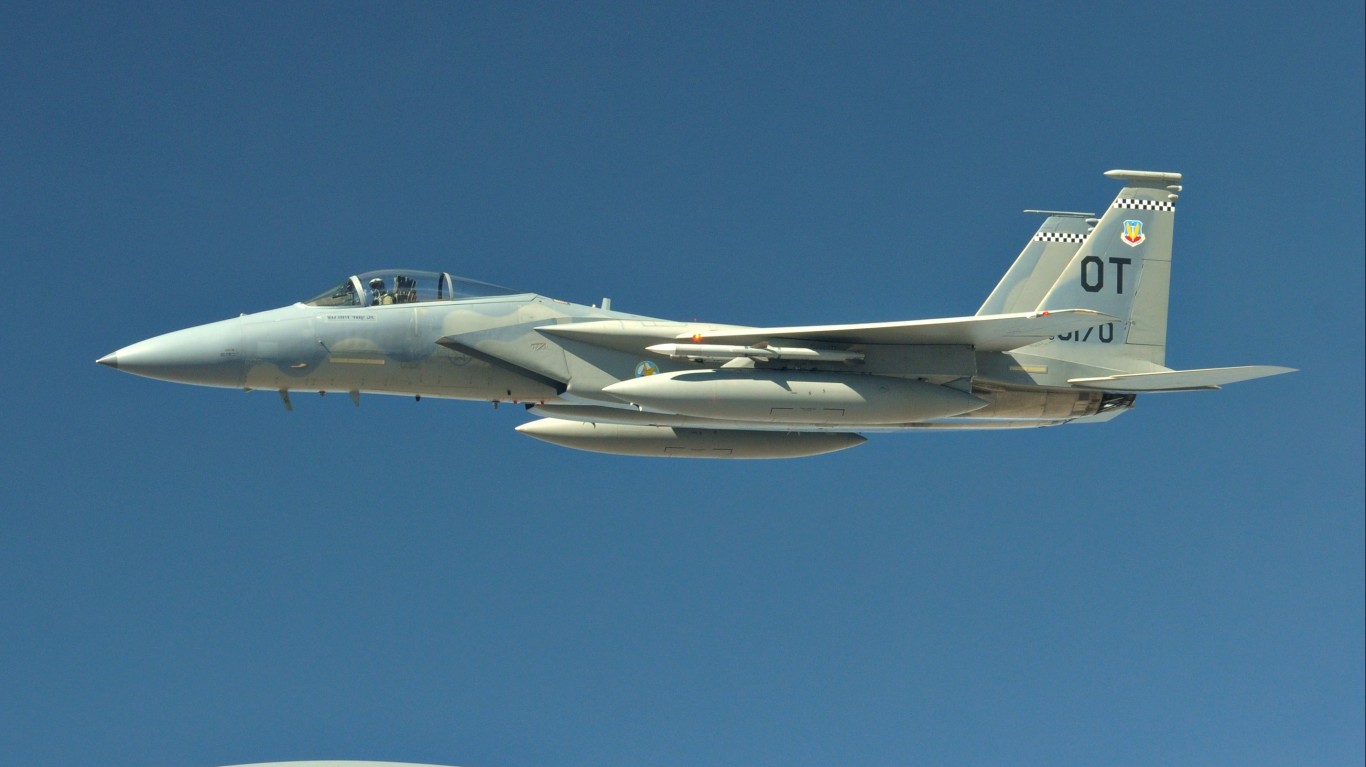Special Report
The F-15 Eagle: Fastest Fighter Jet in the US Military

Published:
Last Updated:

This article was written with the assistance of A.I. technology, and has been edited and fact-checked by Melly Alazraki.
The F-15 Eagle – a twin-engine, supersonic fighter jet – first flew in 1972. It has since become renowned as one of the fastest and most effective warplanes in existence. The F-15 has a top speed of 1,875 miles per hour, making it one of the fastest fighter jets in the world and the fastest in the U.S. armed forces, according to Military Factory, an online database of military vehicles, aircraft, arms, and more. Throughout the tactical fighter jet’s nearly 50-year history, the U.S. Air Force used it to gain and maintain air superiority.
The F-15’s speed and maneuverability are a result of its powerful engines and design. The jet is equipped with two Pratt & Whitney F100 engines, which give it the thrust it needs to reach Mach speeds, and the high engine thrust-to-weight ratio and low wing-loading enables the aircraft to turn tightly without losing airspeed. In addition, the F-15’s airframe is designed to be as aerodynamic as possible, helping it to reduce drag and increase speed.
The F-15’s speed and agility make it a valuable asset in dogfights, where it can outmaneuver many opponents. This was put to the test during the Persian Gulf War in 1991, when F-15C, D, and E models were deployed and proved their superior combat capability, according to the Air Force. F-15C fighters accounted for 34 of the 37 Air Force air-to-air victories.
While the U.S. Air Force plans to replace some of its F-15 squadrons, variants remain an important part of the U.S. military’s air superiority capabilities.
Click here to see the top 10 fastest planes in the US military
Thank you for reading! Have some feedback for us?
Contact the 24/7 Wall St. editorial team.